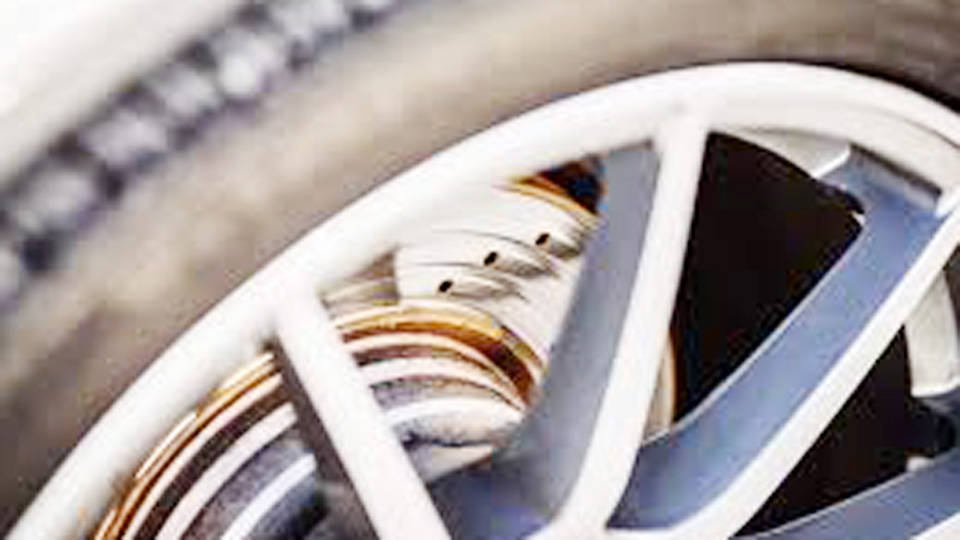Can You Check Brakes Without Removing the Wheel?
As a car enthusiast who’s poked around brake systems on everything from sedans to SUVs, I can tell you it’s often possible to get a good look at your brakes without lugging out the jack and lug wrench. Checking your brakes is super important for safety, and saving time by keeping the wheels on is a big win. Let me walk you through how to check your brakes without removing the wheel, what to look for, and when you might need to go the extra mile.

Photo by rac.co.uk
Why Checking Your Brakes Matters
| # | Preview | Product | |
|---|---|---|---|
| 1 |

|
Made in America Brake Tech Tools Slack Tech Tool Stainless Steel Brake Inspection Tool Quickly Check... | Check Price on Amazon |
| # | Preview | Product | |
|---|---|---|---|
| 1 |
 |
Brake Tech Tools Slack Tech Tool Stainless Steel Brake Inspection Tool Quickly Check The Brake… | Check Price on Amazon |
Your brakes are your car’s most critical safety feature. They stop you from crashing into the car in front of you or skidding off the road. I learned this the hard way when I ignored a squeaky brake on my old pickup truck, only to find the pads were nearly gone. Regular brake checks catch small problems before they become big, expensive, or dangerous ones.
Checking brakes without removing the wheel is a quick way to stay on top of maintenance, especially if you’re short on time or tools. But how much can you really see with the wheel still on? Let’s find out.
What Can You Check Without Removing the Wheel?
When you leave the wheel on, you’re working through the wheel’s spokes or gaps in the wheel well. It’s not as clear a view as with the wheel off, but you can still learn a lot about your brake system. I’ve checked brakes on plenty of cars without removing wheels, and here’s what you can typically inspect:
- Brake Pad Thickness: You can often see the brake pads through the caliper.
- Brake Rotor Condition: Look for grooves, rust, or warping on the rotor surface.
- Brake Caliper Operation: Check for leaks or signs of sticking.
- Brake Fluid Leaks: Spot any wet spots around the caliper or lines.
- General Wear: Notice any unusual noises or debris.
This method works best for disc brakes, which are common on most modern cars’ front wheels and often the rear ones too. Drum brakes, found on some older cars or rear axles, are tougher to check without removing the wheel and drum. I’ll explain more about that later.
When Is It Possible to Check Brakes Without Removing the Wheel?
Whether you can check your brakes without removing the wheel depends on your car’s design. I’ve worked on a bunch of vehicles, and here’s what I’ve learned about when it’s doable.
Cars with Open Wheel Designs
If your car has alloy wheels with wide spokes, you’re in luck. These wheels have big gaps that let you see the brake caliper and rotor clearly. For example, I checked the brakes on my Honda Accord through the spokes, and it was a breeze.
Turning the steering wheel left or right can give you a better angle to peek inside. Steel wheels with hubcaps or smaller gaps are trickier, but you might still get a partial view.
Vehicles with Disc Brakes
Disc brakes are easier to inspect without wheel removal. The brake caliper sits over the rotor, and the pads are visible through the caliper’s opening. I’ve found that front disc brakes are especially accessible because they’re larger and closer to the wheel well. Rear disc brakes can be a bit harder to see, depending on the car.
Limitations with Drum Brakes
Drum brakes are a different story. They’re enclosed in a metal drum, so you can’t see the brake shoes or components without removing the wheel and drum. I once tried to check the rear drum brakes on an old Chevy without pulling the wheel, but all I could do was listen for noises. If your car has drum brakes, you’ll likely need to remove the wheel for a proper inspection.
Tight Wheel Wells
Some cars, like trucks or sports cars with big brakes, have cramped wheel wells. I struggled to see the brakes on a friend’s F-150 because the caliper was tucked in tight. In these cases, removing the wheel might be easier than squinting through a tiny gap.
Tools You’ll Need to Check Brakes
You don’t need a ton of tools to check brakes with the wheel on, which is one reason I love this method. Here’s what I keep handy:
- Flashlight: To see into dark wheel wells.
- Small Mirror: To check hard-to-see angles.
- Ruler or Caliper: To estimate pad thickness.
- Gloves: To keep your hands clean.
- Rag: For wiping off dirt or grease.
If you want to be thorough, a jack and jack stands can help lift the car for better access, but they’re not always necessary. I’ve checked brakes with just a flashlight and mirror while the car was on the ground.
How to Check Brakes Without Removing the Wheel
Let’s get to the fun part—how to actually check your brakes. I’ll walk you through the steps I use, based on years of doing this in my driveway.
Step 1: Park and Prepare
Park your car on a flat surface and set the parking brake. Make sure the car is cool—brake components can get hot after driving. I always start by walking around the car to look for obvious issues, like uneven tire wear or fluid leaks under the wheels.
Step 2: Get a Good View
Kneel by the wheel and shine your flashlight through the spokes or wheel well. Turn the steering wheel to one side for front wheels to open up more space. I like to use a small mirror to check areas that are hard to see directly. If you have hubcaps, pop them off for a better view.
Step 3: Inspect the Brake Pads
Look at the brake pads through the caliper’s opening. The pads are the flat pieces pressing against the shiny rotor. They should be at least ¼ inch thick (about the width of two stacked quarters). If they’re thinner, it’s time to replace them. I once checked my wife’s car and saw the pads were dangerously low—lesson learned to check more often!
Step 4: Check the Rotor
The rotor is the big metal disc behind the caliper. Look for deep grooves, heavy rust, or uneven wear. A smooth, shiny rotor is good; a deeply scored one might need resurfacing or replacement. I’ve spotted bad rotors by the way they catch the light—grooves stand out like scratches.
Step 5: Look at the Caliper
Check the caliper for leaks or signs it’s stuck. A healthy caliper moves smoothly and doesn’t have wet spots or corrosion. If you see brake fluid dripping, that’s a problem. I once found a leaky caliper on my old Civic, which explained why the brakes felt uneven.
Step 6: Listen and Feel
Start the car and gently press the brake pedal. Listen for grinding, squealing, or clicking noises. Feel for vibrations through the pedal or steering wheel. These can indicate worn pads, bad rotors, or other issues. I always do this to catch problems I can’t see.
Step 7: Check All Wheels
Repeat the process for each wheel. Even if one brake looks fine, the others might not. I make a mental note (or jot it down) of what I see at each wheel to stay organized.
Challenges of Checking Brakes Without Removing Wheels
Checking brakes with the wheel on is convenient, but it’s not perfect. Here are some hurdles I’ve faced:
Limited Visibility
You can’t see everything through the wheel. Some parts, like the inner brake pad or caliper pins, are hidden. I’ve missed small issues because I couldn’t get a full view, only to find them later when I removed the wheel.
Hard-to-Reach Areas
Tight wheel wells or complex wheel designs can block your view. I once spent 15 minutes trying to check a BMW’s brakes through tiny spokes before giving up and removing the wheel.
Dirt and Debris
Wheel wells are dirty places. Brake dust and grime can obscure your view. I always wipe down the caliper with a rag to see better, but it’s still messy.
When Should You Remove the Wheel?
Sometimes, taking the wheel off is the smarter move. Here’s when I decide to do it:
- Drum Brakes: You need to remove the wheel and drum to inspect the brake shoes.
- Poor Visibility: If you can’t see the pads or rotor clearly, wheel removal gives a full view.
- Suspected Damage: If you hear noises or feel issues, a thorough inspection requires wheel removal.
- Maintenance Tasks: If you’re replacing pads or rotors, you’ll need the wheel off anyway.
Removing a wheel takes about 10 minutes with a jack, jack stands, and lug wrench. It’s not a huge hassle, but I get why you’d want to skip it.
What to Do If You Spot Problems
If your check reveals issues, here’s how I handle it:
- Worn Brake Pads: Replace them soon. Pads cost $20–$100 per axle, and it’s a DIY-friendly job.
- Damaged Rotors: Resurface or replace them. Rotors cost $50–$200 per axle.
- Leaky Caliper: Repair or replace it. A new caliper might run $100–$300.
- Noises or Vibrations: Get a pro to inspect if you’re unsure what’s causing it.
I’ve saved a ton by catching brake problems early and fixing them myself, but I’m not shy about calling a mechanic for tricky stuff.
Tips for Keeping Your Brakes Healthy
Here are some tricks I’ve learned to keep brakes in top shape:
- Check Regularly: Look at your brakes every 6 months or 10,000 miles.
- Drive Smoothly: Avoid hard braking to reduce wear.
- Clean Wheels: Wash off brake dust to prevent corrosion.
- Listen Up: Squealing or grinding means it’s time to check.
- Use Quality Parts: Good pads and rotors last longer and perform better.
Cost of Brake Maintenance
Checking brakes yourself is free, but here’s what you might spend on fixes or professional help:
| Service | **Estimated Cost (Parts + Labor) |
|---|---|
| DIY Brake Check | $0–$20 (tools) |
| Brake Pad Replacement | $50–$200 per axle |
| Rotor Replacement | $150–$400 per axle |
| Caliper Repair/Replacement | $100–$500 |
| Professional Brake Inspection | $50–$150 |
DIY saves money, and checking without removing wheels saves time. I’ve kept my repair bills low by staying proactive.
Preventing Brake Problems
To avoid brake issues in the future, here’s what I stay on top of:
- Monitor Brake Fluid: Check the reservoir monthly and top off as needed.
- Inspect Regularly: Catch wear before it damages rotors or calipers.
- Avoid Overheating: Don’t ride the brakes on long downhill drives.
- Flush Brake Fluid: Replace fluid every 2–3 years to prevent moisture buildup.
When to Call a Professional
If you spot serious issues like leaks or can’t see enough to feel confident, it’s time for a mechanic. I took my car to a shop once when I heard grinding but couldn’t have a clear view to diagnose it. A quick inspection. They found a seized caliper, which I wouldn’t have caught on my own. Professional inspections cost $50–$150, but they’re worth it for safety. peace of mind.
Conclusion
Checking your car’s brakes without removing the wheel is a handy skill that can save time, money while keeping you safe on the road. I’ve done it countless times, and there’s something so rewarding about knowing your brakes are good to go without breaking out the heavy tools. By using a flashlight, mirror, and a bit of patience, you can inspect brake pads, rotors, calipers, and more on many cars.
There are limits—like drum brakes or tight wheel wells—but for most vehicles, it’s a quick way to stay proactive. If you spot trouble or can’t see enough, don’t hesitate to remove the wheel or call a pro. With regular checks and a little care, you’ll keep your brakes in great shape and drive with peace of mind. Check out the FAQs below for more tips, and happy driving!
FAQs
Can I check their brakes without removing wheels on any car?
Not every car. Cars with open alloy wheels and disc brakes are easiest. Drum brakes or tight wheel wells often need wheel removal.
How often should I check my brakes regularly?
Every 6 months or 10,000 miles is a good rule. Check sooner if you hear noises or feel brake issues.
What does it mean if my brakes squeal when I stop?
Squealing usually means worn brake pads or dust buildup. Check the pads and clean the caliper if needed.
How thin can brake pads be before they’re dangerous?
Replace pads when they’re thinner than ¼ inch. Thinner pads can damage rotors and reduce stopping power.
Can I check drum brakes without removing the wheel?
It’s tough. You can listen for noises, but you need to remove the wheel and drum for a proper inspection.
What if I see fluid near my brake caliper?
Fluid leaks mean a bad caliper or brake line. Get it fixed ASAP—it’s a safety issue.
How do I know when my rotors are bad?
Look for deep grooves, heavy rust, or uneven surfaces. Vibrations or grinding when braking are warning signs too.

David Peterson, the chief editor of sparepartscare. I am an automobile engineer and assign to an local firm with much experience in automobile equipment. During the time, most of my experience is related to the Industry of cars parts. I learned about the thing, when working with experienced inspectors, one must be as good as the inspector, or better, with knowledge of the project as well as the practical aspects of automobile industry.






